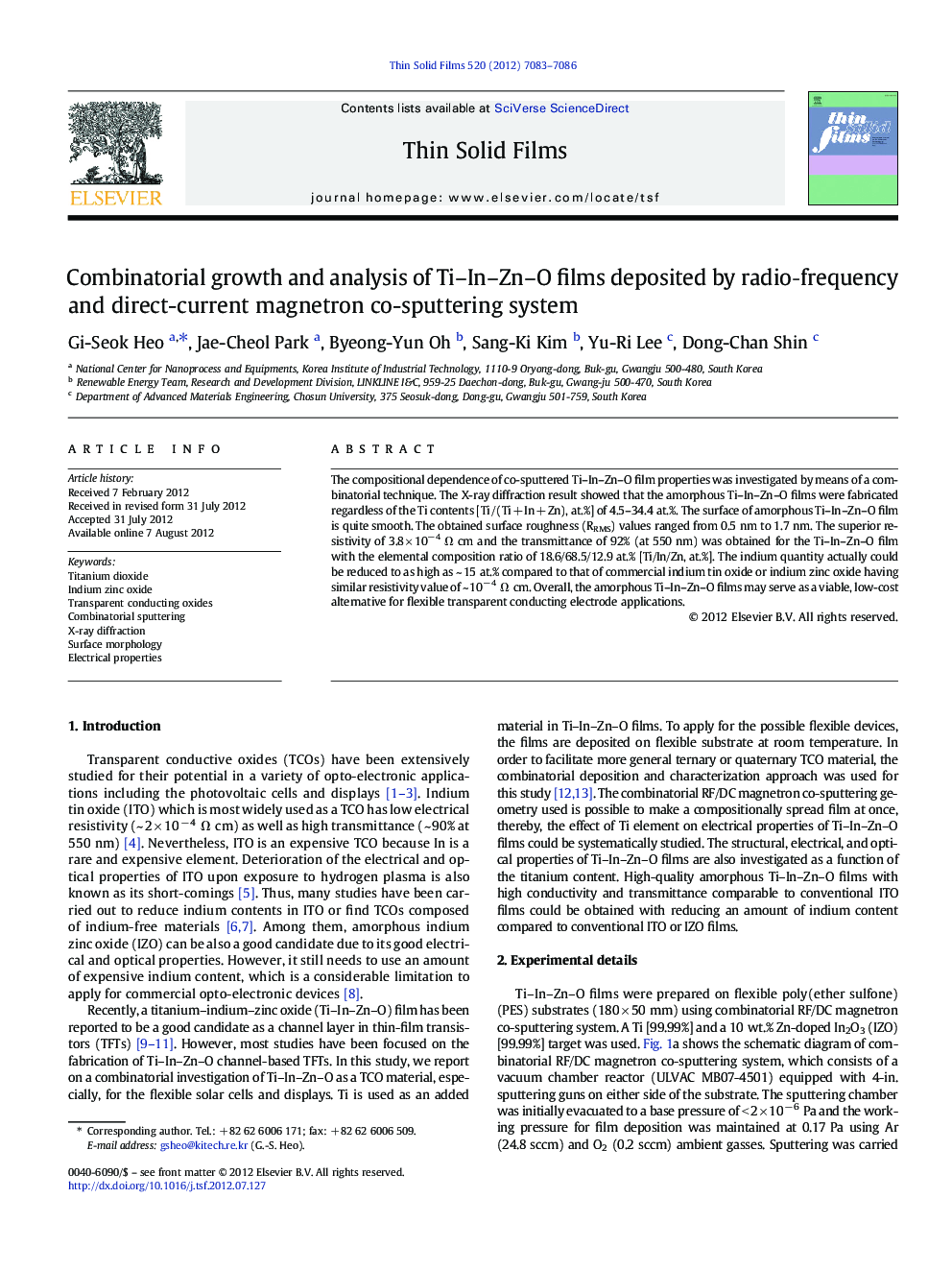| Article ID | Journal | Published Year | Pages | File Type |
|---|---|---|---|---|
| 1666732 | Thin Solid Films | 2012 | 4 Pages |
The compositional dependence of co-sputtered Ti–In–Zn–O film properties was investigated by means of a combinatorial technique. The X-ray diffraction result showed that the amorphous Ti–In–Zn–O films were fabricated regardless of the Ti contents [Ti / (Ti + In + Zn), at.%] of 4.5–34.4 at.%. The surface of amorphous Ti–In–Zn–O film is quite smooth. The obtained surface roughness (RRMS) values ranged from 0.5 nm to 1.7 nm. The superior resistivity of 3.8 × 10− 4 Ω cm and the transmittance of 92% (at 550 nm) was obtained for the Ti–In–Zn–O film with the elemental composition ratio of 18.6/68.5/12.9 at.% [Ti/In/Zn, at.%]. The indium quantity actually could be reduced to as high as ~ 15 at.% compared to that of commercial indium tin oxide or indium zinc oxide having similar resistivity value of ~ 10− 4 Ω cm. Overall, the amorphous Ti–In–Zn–O films may serve as a viable, low-cost alternative for flexible transparent conducting electrode applications.
► We investigate the properties of Ti–In–Zn–O films by combinatorial sputtering method. ► Deposited Ti–In–Zn–O films are all amorphous phase. ► Resistivity of 3.8×10–4 Ω cm and the transmittance of 92% (at 550 nm) are obtained. ► Ratio of 18.6/68.5/12.9 at.% [Ti/In/Zn, at.%] shows best properties. ► Amorphous Ti–In–Zn–O films as alternative for flexible transparent conducting oxide.
